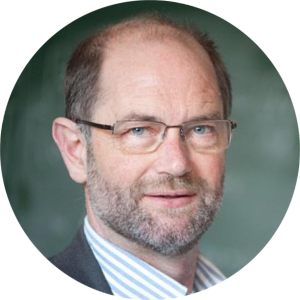Design and potential applications of patterned electron mirrors
Pieter Kruit, Delft University of Technology (The Netherlands)
02 July 2019 h. 3:00- 4:00 PM CET
Facebook Live: https://www.facebook.com/quantumsorter/
The sixth Q-SORT Interdisciplinary Training Webinar touches upon the following topics:
- Electron mirrors;
- Programmable phase plates;
- Interaction free microscopy.
Following a recent suggestion [1] that interaction-free measurements [2] are possible with electrons, we have analyzed the possibilities to use this concept for imaging of biological specimen with reduced damage. We have also made preliminary designs for an atomic resolution interaction-free electron microscope, or “quantum electron microscope” [3]. In such a microscope we need two novel elements: a double mirror which enables an electron to pass multiple times through the same region, and a splitter/coupler which splits an electron wave front in two parts or combines two parts back into one. The latter should be equivalent to what a semitransparent mirror can do for light. We found that the mirror can be combined with the coupler in a grating mirror [4]. By having the electron wave front reflect on an equipotential surface with a line pattern, the reflected electron picks up a phase modulation which develops in the far field into a diffraction pattern. Of course, we are not restricted to a line pattern on the mirror, so, with a few notable restrictions, it is possible to imprint an arbitrary phase pattern onto an electron wave. This may be an alternative for a programmable phase plate in transmission mode [5].
References
1] Putnam, W.; Yanik, M. Phys. Rev. A 2009, 80, 040902.
2] Elitzur, A. C.; Vaidman, L. Found. Phys. 1993, 23, 987–997.
3] Kruit, P.; Hobbs, R. G.; et al, Ultramicroscopy (2016), doi:10.1016/j.ultramic.2016.03.004.
4] M.A.R. Krielaart and P. Kruit, Physical Review A 98 (2018), p. 063806.
5] J. Verbeeck et al, Ultramicroscopy 190 (2018), p. 58-65.
About the speaker

Pieter Kruit is full professor of physics at Delft University of Technology in the Netherlands. He has had a chair in charged particle optics since 1989. He is (co)author of over 200 publications, author of 50 international patents, and supervisor of 35 PhD dissertations. His research is related to the development of electron- and ion-optical instruments for microscopy or nano-lithography. His innovative designs often use MEMS structures. He is presently applying this technology in designs for a Quantum Electron Microscope where the non-demolition principles are investigated for application in low dose microscopy. Most of his work is performed in cooperation with industry. Based on his work he founded, with his graduates, the companies MAPPER Lithography and. DELMIC. Among his organizational responsibilities was the editorship of Ultramicroscopy.
